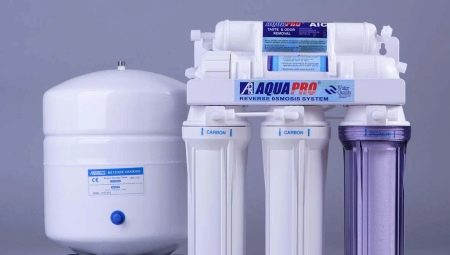Any owner of a home reservoir knows that the well-being of the population of the aquarium is highly dependent on the quality of the water. In order to create a favorable living environment in a home reservoir, water purification and circulation systems will be required. Their use will positively affect the life expectancy of pets. Consider one of the most advanced - reverse osmosis system.
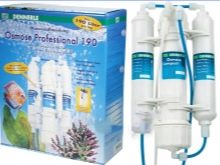
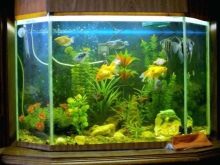
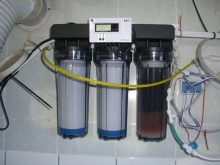
What it is?
The liquid filtration procedure, when moisture passes through a special diaphragm, which holds up to almost 90% of all unnecessary and harmful impurities, is called reverse osmosis. Only water passes through the membrane, all other impurities linger on it. This must be taken into account and add all useful substances and minerals yourself. There are various types of reverse osmosis water filtration systems on sale. They can be divided into several types, which differ in such points:
- level of filtration;
- coefficient of performance;
- aperture option.
The most popular filter system is considered with a membrane from a composite film. It very efficiently cleans the liquid in the aquarium. Additionally, mechanical and carbon filters help to remove moisture.
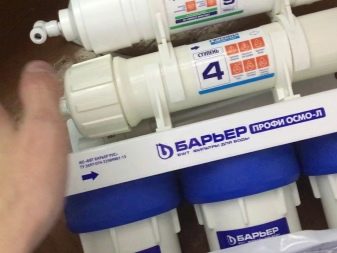

Advantages of the reverse osmosis system
The device was widely used due to the following.
- Environmental friendliness. In the manufacture of products of this type, only proven, environmentally friendly materials are used. Therefore, there is no reason to fear for the health and life of pets.
- Cleaning up. Due to its high performance, the filter copes with moisture contamination, quickly and efficiently removing all additives.
- Small size. The product has compact dimensions and is available to use.
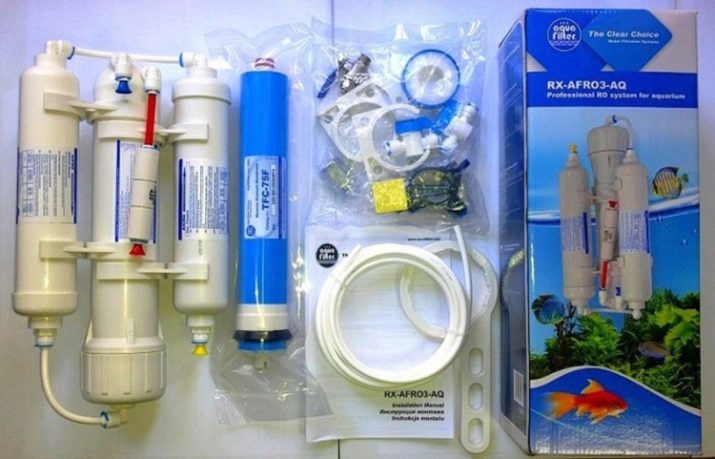
The use of reverse osmosis
Caring for the aquarium, in addition to aesthetic pleasure, creates some problems. Owners of aquariums know firsthand that each type of fish needs to create ideal living conditions. Including the liquid in the pond must be brought to an acceptable condition for a comfortable stay of residents in it. This will help osmosis, the use of which will bring the aqueous solution to a state close to optimal.
Osmosis water is filtered both in freshwater and saltwater aquariums. In freshwater aquariums, the use of a reverse osmosis liquid filtration system is optional, there are other cheaper options. But if you breed fish and other creatures that are particularly demanding on water hardness, then you still need at least one filter.
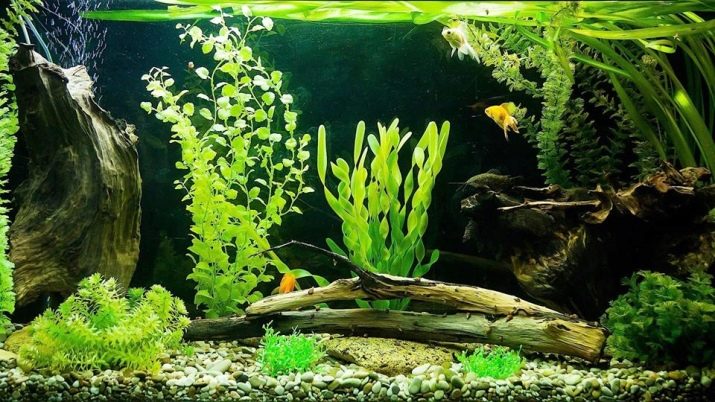
For water bodies with sea water, which contain especially capricious species of fish or corals, the purchase of reverse osmosis will be a profitable investment. Since the system has a rather high price, it is worth considering whether it is really necessary. Before buying, you should conduct a study of the water that you use to fill the aquariums, and make a decision based on the test results. Before applying the filtering system, you need to remember a few simple rules.
- A sharp change in water quality for the better can lead the inhabitants of the aquarium into a stressful state. It is necessary to take into account the amount of fluid to be replaced.
- It is forbidden to completely fill the tank with purified water. In this liquid there are no useful substances that are required for a comfortable stay of pets in the aquarium.
The living conditions of decorative fish are different from natural. In order for the inhabitants of the home reservoir not to get sick and not to die, one should observe the peculiarities of keeping fish species.
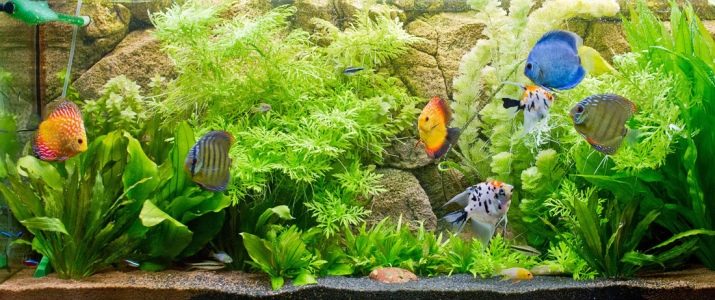
Principle of operation
To obtain osmosis water, the filtration system is connected to the water supply network and from it receives liquid for cleaning, and all unnecessary and harmful is sent to the sewer. To protect against failure of the most important element of the product - the membrane, you should pay attention to the pre-treatment stage. In this process, up to 3 different filters can be used, the purpose of which is to prepare an aqueous solution before the diaphragm works.
Initially, water is purified by a mechanical filter that removes a variety of substances, such as sand, clay and other impurities. Then it goes to the carbon filter, with its help heavy metals, chlorine and other chemicals are eliminated. The quality of the carbon filter is of great importance, the main task of which is to purify water from all kinds of chemical compounds.
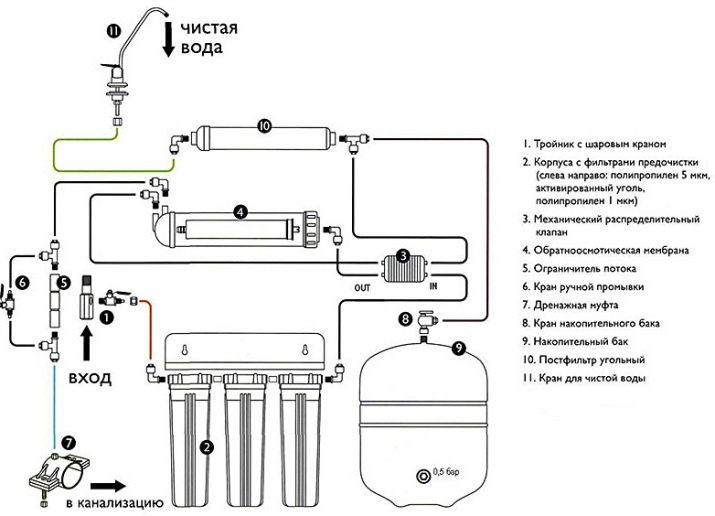
And at the final stage, moisture enters the fine filter, which purifies the smallest mechanical impurities. After performing these procedures, water from the filter enters the diaphragm conducting the final cleaning. In the process of reverse osmosis, a pure, almost distilled liquid is obtained, which can be used only in limited quantities.
To fix this flaw, it is necessary to enrich the water with minerals. Remineralization - the procedure for adding mineral additives to the water passed through reverse osmosis.
This is necessary in order to prevent the wilting of plants in the aquarium and fish disease.
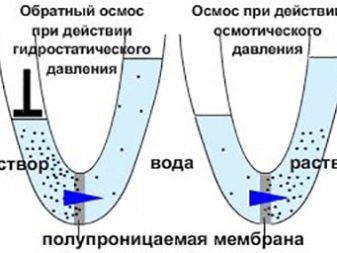
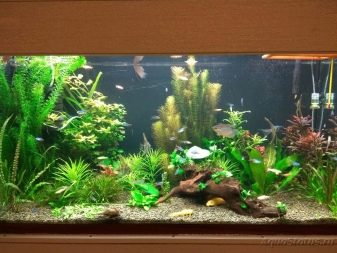
Care
All devices require service, including an osmosis filtration system. From time to time, users should monitor water hardness and hydrogen concentration. If the indicators change and cease to suit the owner, then filters and aperture should be replaced.
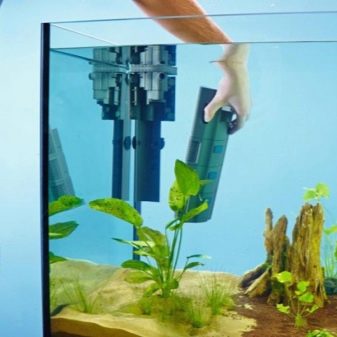
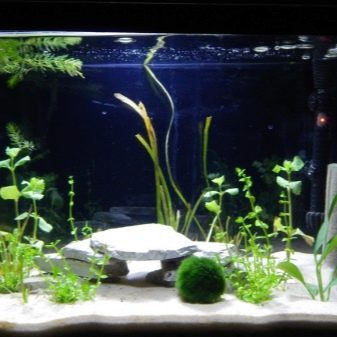
About why you need a reverse osmosis filter for an aquarium, see the next video.
